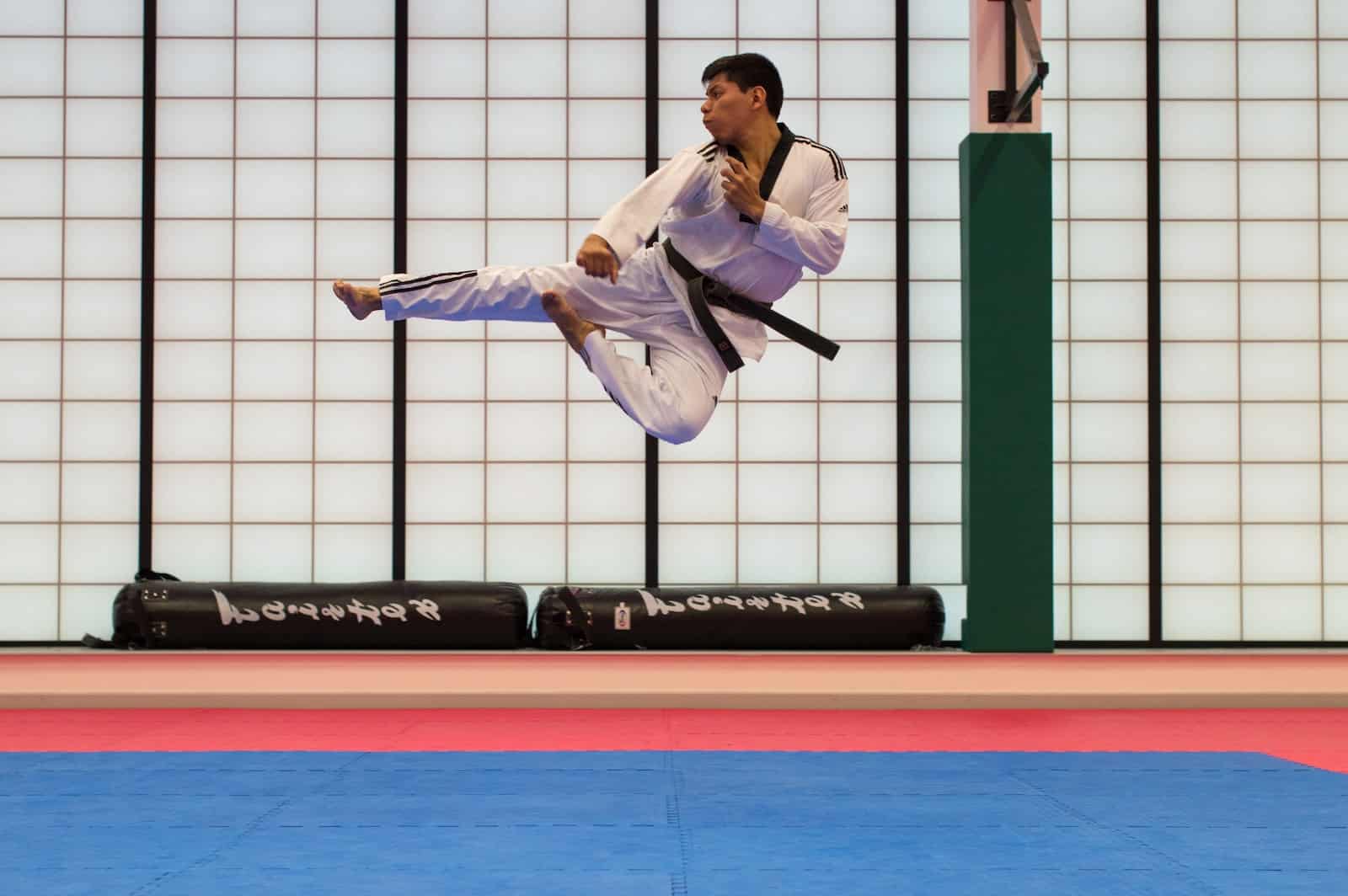The history of martial arts around the world

As the sun rises in the East, so too did martial arts find its origins in this corner of the world. Transcending mere physicality, martial arts emerged as an art form, a philosophy, a way of life, and a tool for self-defense. Its evolution from primal combat techniques to regulated sports is a narrative ripe with cultural nuances, societal shifts, and human ingenuity.
Martial Arts in the Eastern World
The Eastern world, synonymous with a wealth of cultures and histories, gave birth to martial arts. This diverse region, stretching from China to Japan, has a rich tapestry of martial art forms, each narrating a unique tale of survival, discipline, and spirituality.
A lire aussi : Handball: basic rules and strategies
Ancient Chinese Influences
As an age-old civilization, ancient China set the foundation for many popular martial arts styles. Techniques, traced back to the 5th century BCE, were often inspired by animal movements and were adopted as methods of combat, hunting, and self-defense.
Originally recorded in the Classic of Rites, Chinese martial arts, or ‘Wushu’, has been a part of the military training regimen. The emergence of the Qin Dynasty led to a standardized form of martial arts training for the soldiers.
A lire aussi : The role of sports coaches
The Shaolin Monastery in the 5th Century AD saw Buddhist monks creating a physical regimen that laid the groundwork for Kung Fu. This was a comprehensive system combining Zen Buddhism teachings with rigorous physical exercises, serving as a tool for mental and physical discipline.
The Way of the Samurai: Karate in Japan
Unlike the Chinese pursuit of fluidity and balance, Japanese martial arts often centred around the art of the sword. The most famous of these is Karate, a martial art form that emerged in the 14th century in Okinawa, a series of islands located south of mainland Japan.
Karate, meaning "empty hand", was born out of necessity. It was developed when weapons were banned, leading to the use of hands and feet for self-defense. This art form eventually evolved into a set of codified practices under the influence of Chinese martial arts.
Martial Arts in the Western World
As the centuries passed, the Western world began to adopt, adapt, and create their own versions of martial arts. These forms of combat were often influenced by ancient Greek and Roman techniques, and later evolved into sports and methods for self-defense.
Greco-Roman Wrestling: The West’s Original Martial Art
Dating back to the ancient Olympic Games in 708 BCE, wrestling stands as one of the oldest forms of combat known to man. This martial art style requires immense physical strength and strategic moves to pin the opponent to the ground.
In Rome, this sport evolved into a military training exercise designed to prepare soldiers for hand-to-hand combat situations. Over the centuries, the rules of wrestling have been adapted and modified, but the sport’s essence remains the same.
Rise of Boxing in the 18th Century
Boxing is another martial art form prominent in the Western world. It emerged in England in the 18th century as a regulated sport with a set of rules. The practice of Bare-knuckle boxing was a popular, albeit brutal, form of public entertainment.
Boxing requires a well-honed mix of agility, strength, speed, endurance, and above all, strategy. Unlike other martial arts, boxing focuses on the use of fists and upper body strength for offense and defense.
Modern Combat Sports: Blurring the East-West Divide
The 20th century saw the advent of modern combat sports that incorporate techniques from both Eastern and Western martial arts traditions. This global interest resulted in the creation of hybrid sports like Mixed Martial Arts (MMA) and Brazilian Jiu-Jitsu.
Birth of MMA
Arguably the most popular modern combat sport, MMA is a cocktail of different martial arts styles. It allows a wide variety of techniques from striking to grappling, borrowed from disciplines such as boxing, wrestling, and karate.
MMA emerged in the United States in the early 1990s with the formation of the Ultimate Fighting Championship (UFC). The intention was to create a competition to find out the most effective martial art for real unarmed combat situations.
Evolution of Brazilian Jiu-Jitsu
Brazilian Jiu-Jitsu is another martial art that exemplifies the East-West synthesis. This combat sport originated from Kodokan Judo ground fighting (newaza) fundamentals that were taught by a number of individuals including Takeo Yano, Mitsuyo Maeda, Soshihiro Satake, and Isao Okano.
Brazilian Jiu-Jitsu came into the limelight in the early 20th century when Mitsuyo Maeda, a Japanese judoka, taught Carlos Gracie, who later passed on his knowledge to his brothers. The Gracie family refined these techniques into what is now known as Brazilian Jiu-Jitsu.
The history of martial arts is a testament to human innovation in the face of adversity. From its beginnings in the East, martial arts have spread across the globe, adapting to the unique needs and cultures of different societies. It’s not only a physical discipline but also a mirror reflecting the evolution of civilizations.
The Spread of Martial Arts: A Global Phenomenon
From its origins in the Eastern world, martial arts have traversed boundaries and cultures, creating a global impact. This journey introduced the world to numerous martial arts styles and icons, while also inspiring the invention of new combat sports.
Thai Boxing: Muay Thai
One of the most popular martial arts styles that gained international attention is Muay Thai, known as the "Art of Eight Limbs". Originated from Thailand, it involves the use of fists, elbows, knees, and shins, promising a full-contact combat experience.
Muay Thai was developed several hundreds of years ago as a form of close-combat that utilizes the entire body as a weapon. Today, it is a national sport of Thailand and is acknowledged worldwide for its raw intensity and the high level of conditioning required.
Bruce Lee and Jeet Kune Do
Speaking of martial arts icons, none are as legendary as Bruce Lee. Apart from his notable film career, Lee was a martial artist who developed his own martial arts style – Jeet Kune Do or "The Way of the Intercepting Fist".
His philosophy emphasizes "having no way as way" and "having no limitation as limitation", suggesting the idea of adaptability and fluidity in combat. Jeet Kune Do incorporates aspects from different martial arts, making it a precursor to modern MMA.
Korean Martial Arts: Taekwondo and Hapkido
Korean martial arts also gained recognition with styles like Taekwondo and Hapkido. Taekwondo, known for its high and fast kicks, is one of the most practiced martial arts in the world. It combines combat techniques, self-defense, sport, exercise, meditation, and philosophy.
Hapkido, on the other hand, is a hybrid martial art form that combines joint locks, kicks, punches, and other striking attacks. Also using traditional weapons, it emphasizes circular motion, non-resisting movements, and control of the opponent.
Conclusion: The Enduring Legacy of Martial Arts
The journey of martial arts through history is a fascinating tale of cultural exchange and adaptation. From the ancient Shaolin monks to the modern MMA fighters, martial arts have continually evolved, reflecting the changing times and societal contexts.
These arts of combat, while primarily developed for self-defense, have become a form of expression, a sport, a method of meditation, and a means of personal development. Whether it’s the graceful movements of Tai Chi, the discipline of Karate, or the tactical prowess of Brazilian Jiu-Jitsu, each martial art has its own unique charm and essence.
The popularity of martial arts has never been confined to any one region or culture. It has always been a global phenomenon. The various martial arts styles have acted as ambassadors, transcending linguistic and cultural barriers, fostering a sense of global unity and mutual respect.
Today, martial arts continue to inspire millions around the world, offering not just a system of self-defense but a path to self-discovery and self-improvement. From its roots in the East, martial arts have truly become a global heritage. After all, they are not just about fighting; they encapsulate a way of life, a philosophy, and above all, a journey of the human spirit.
